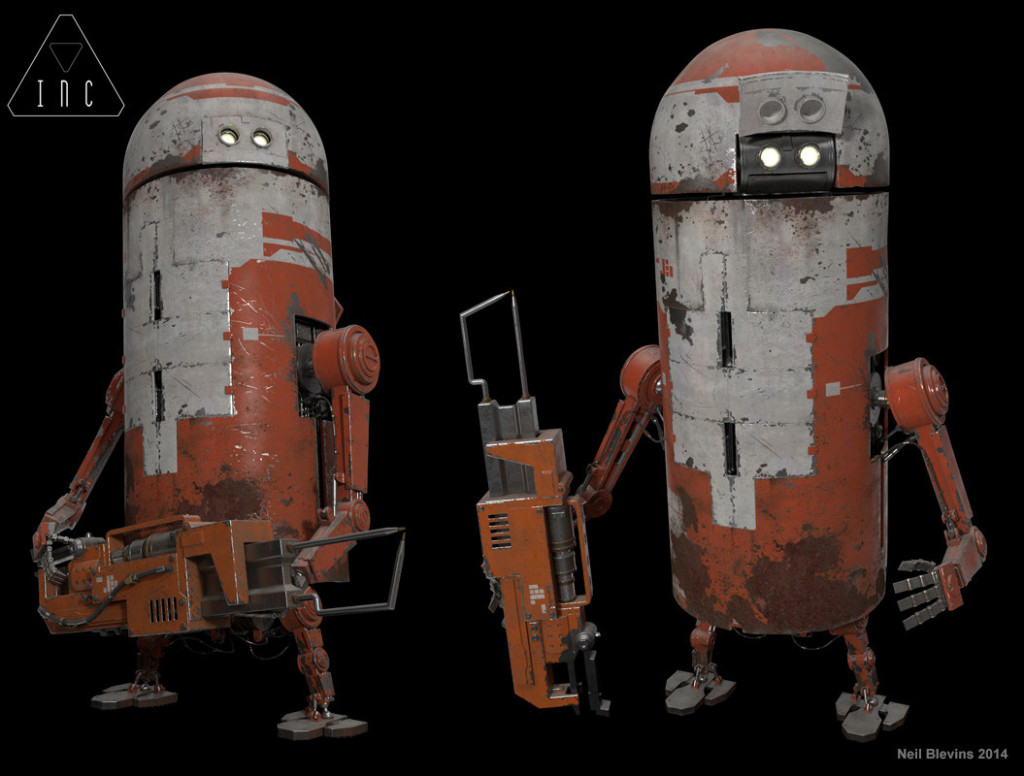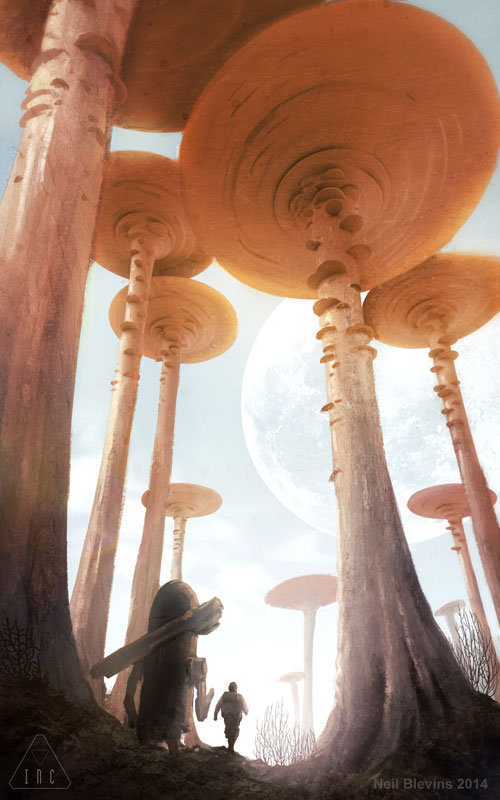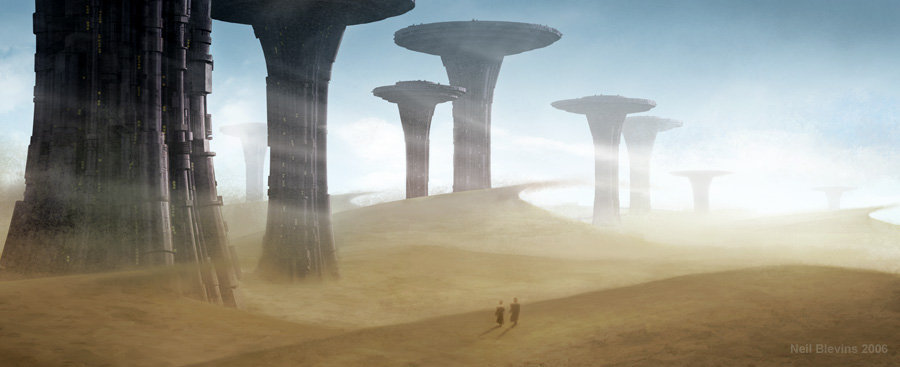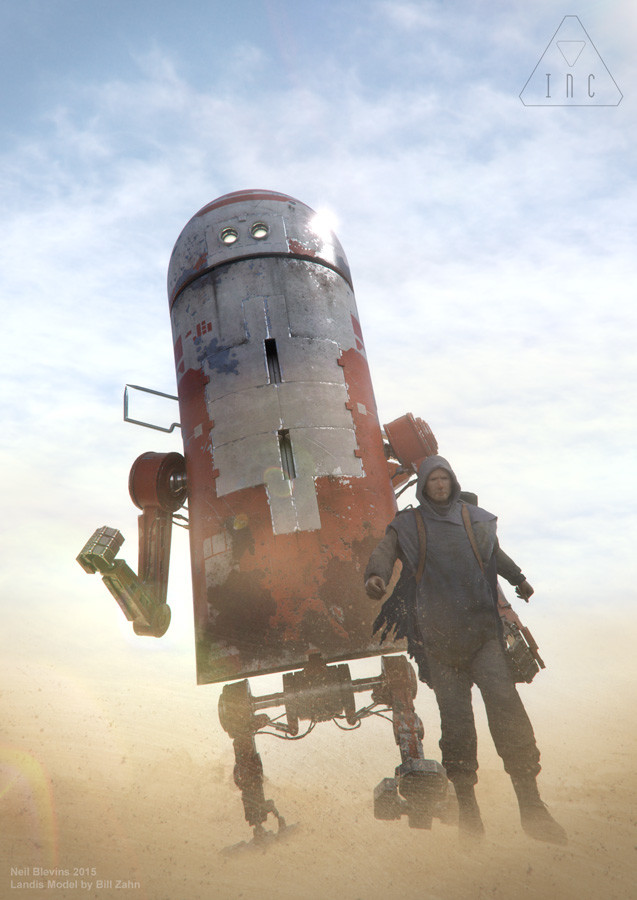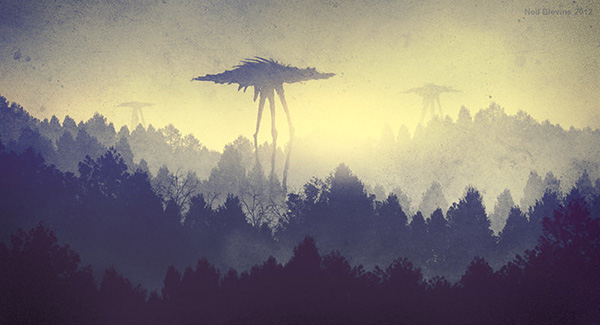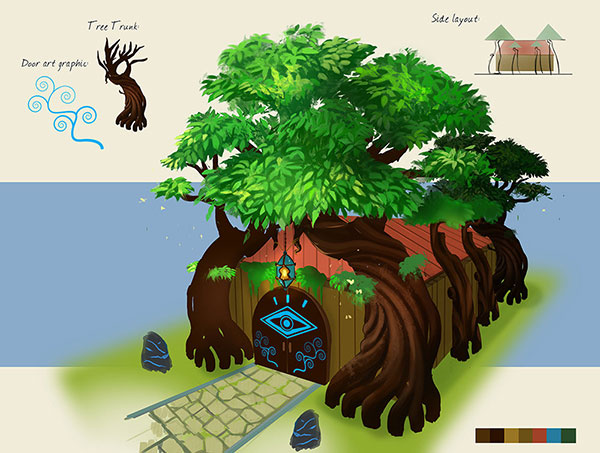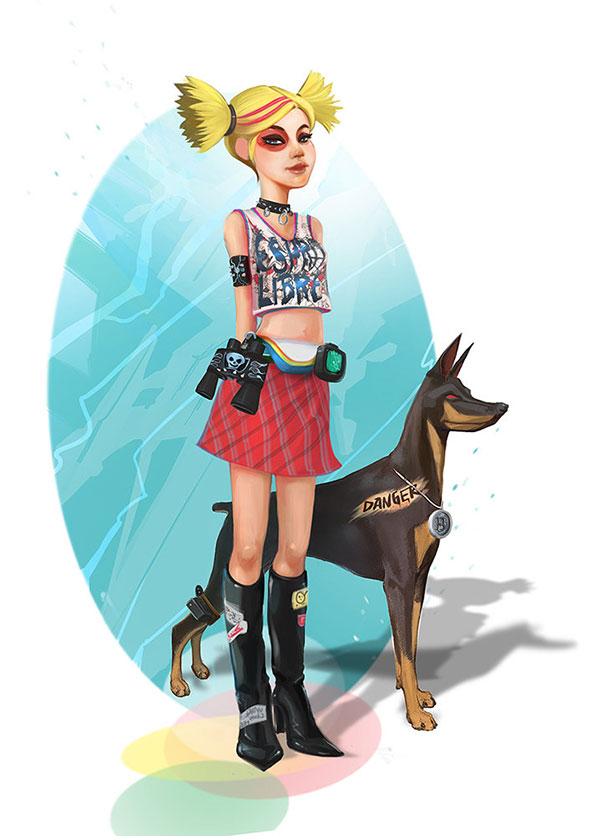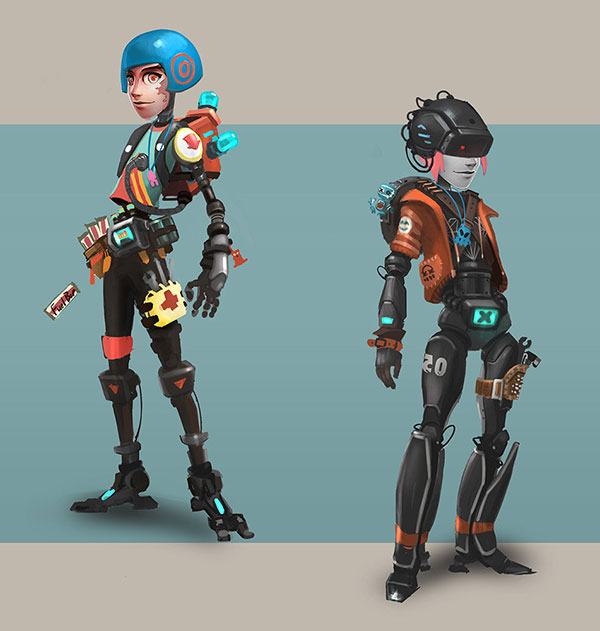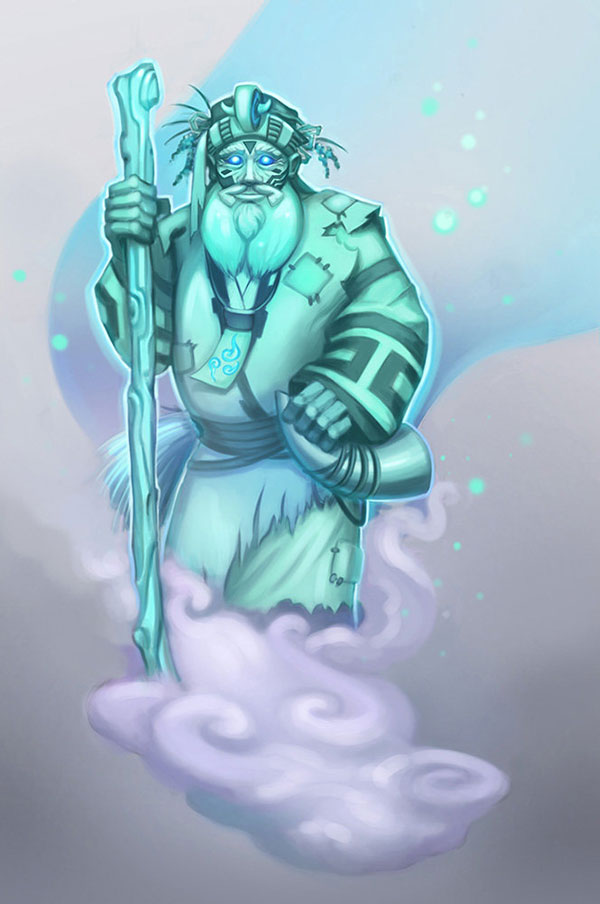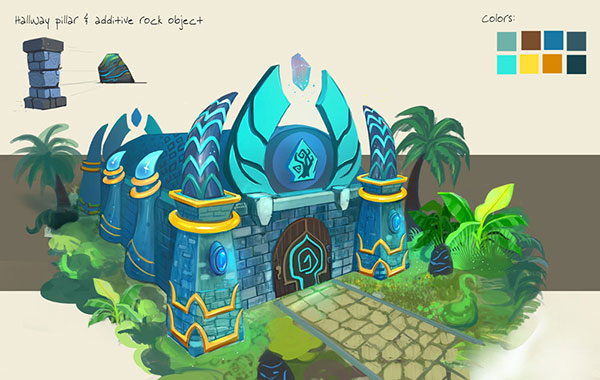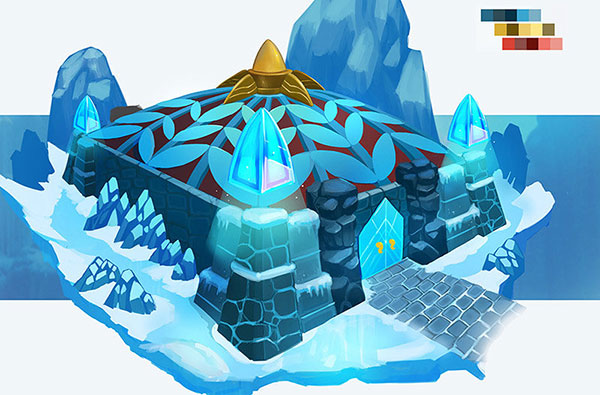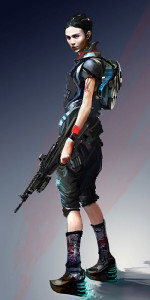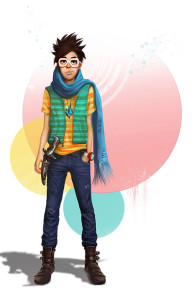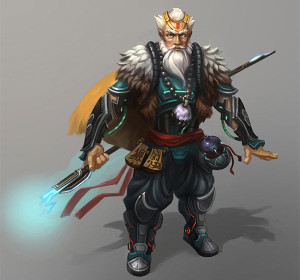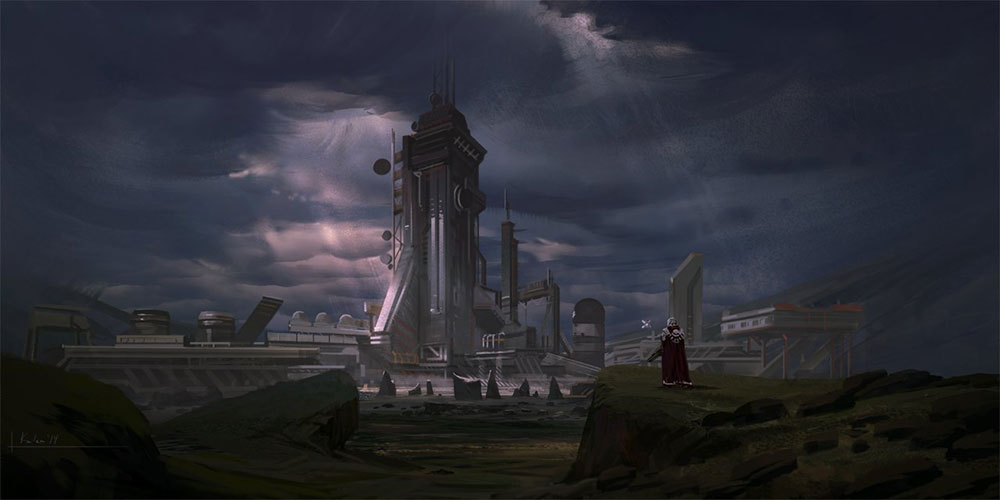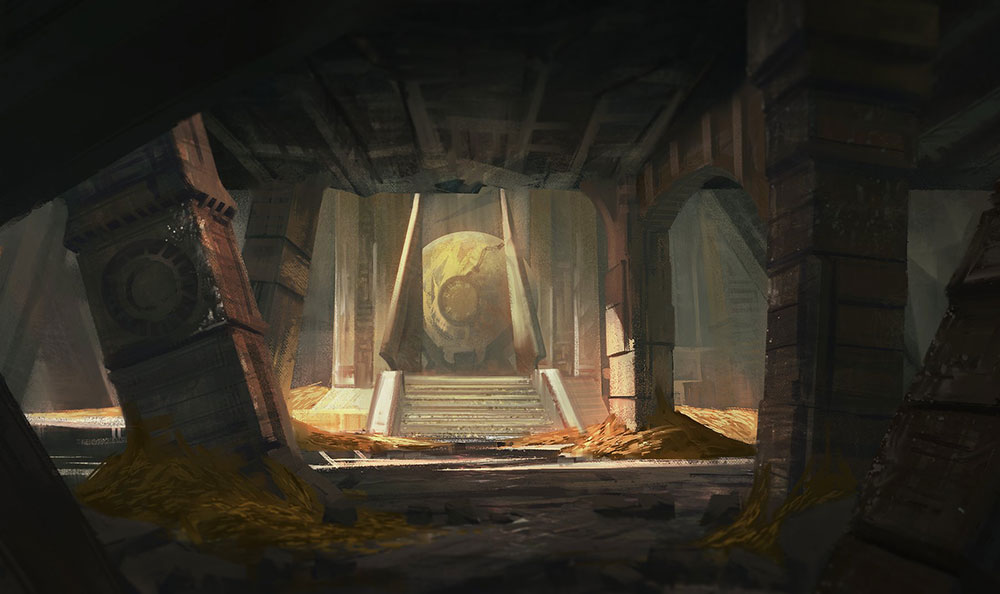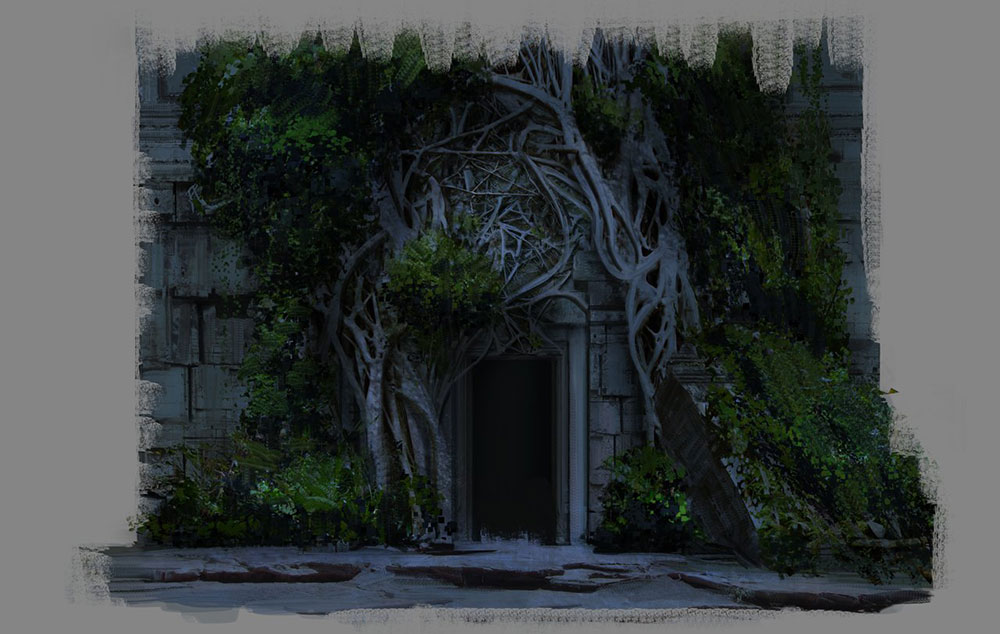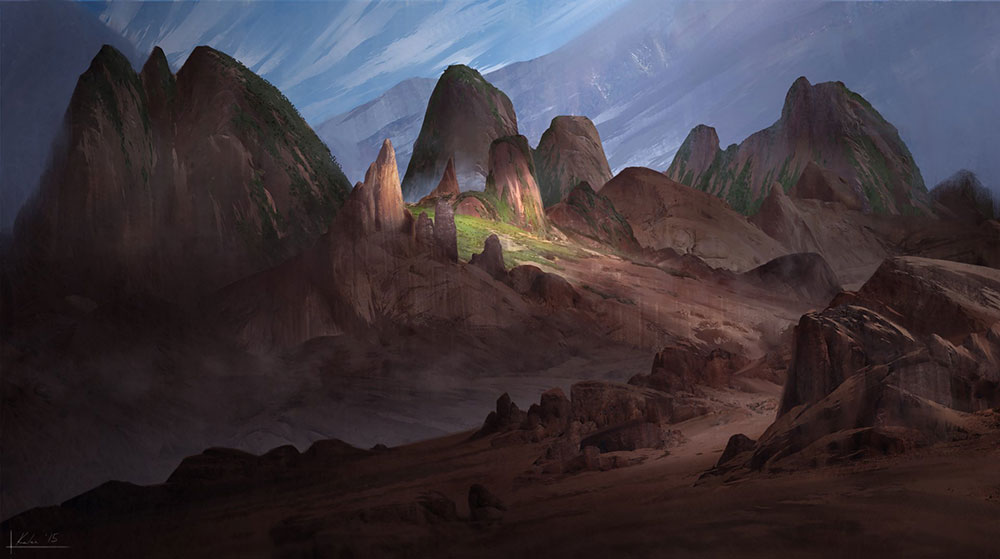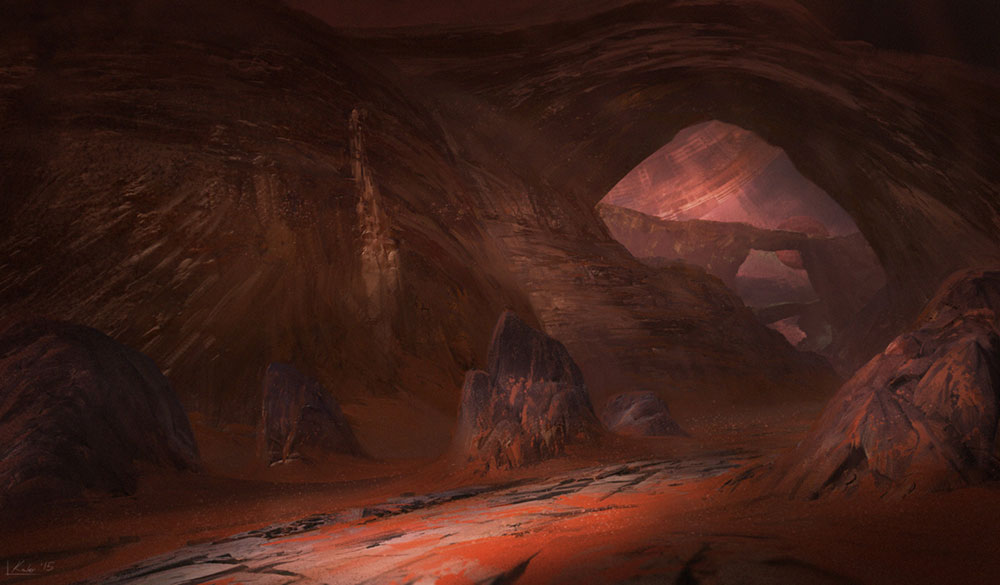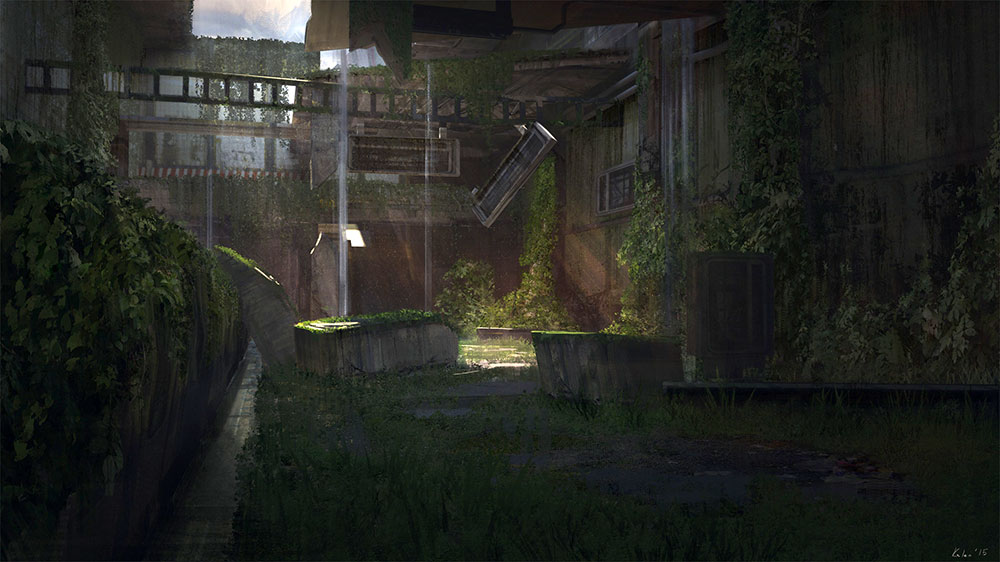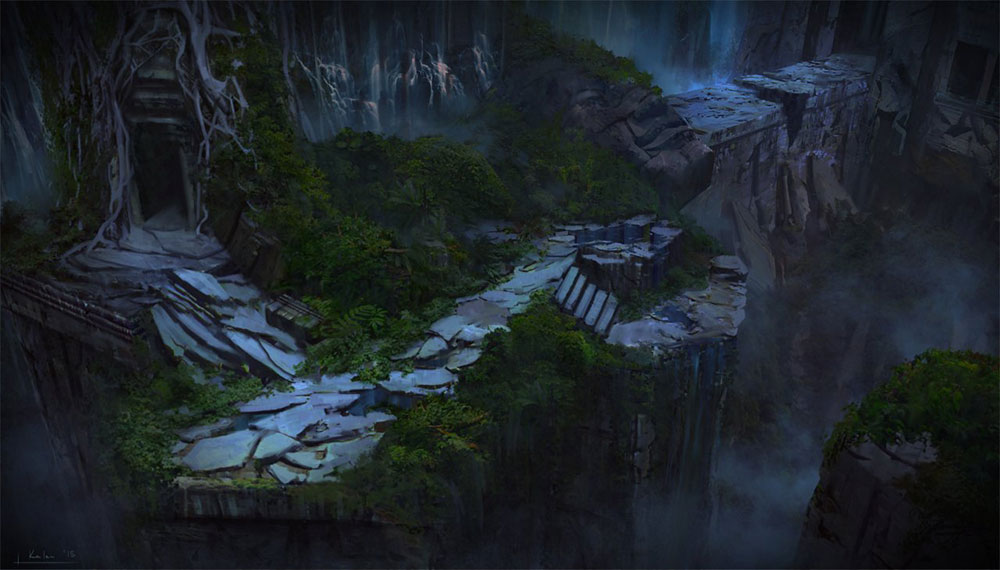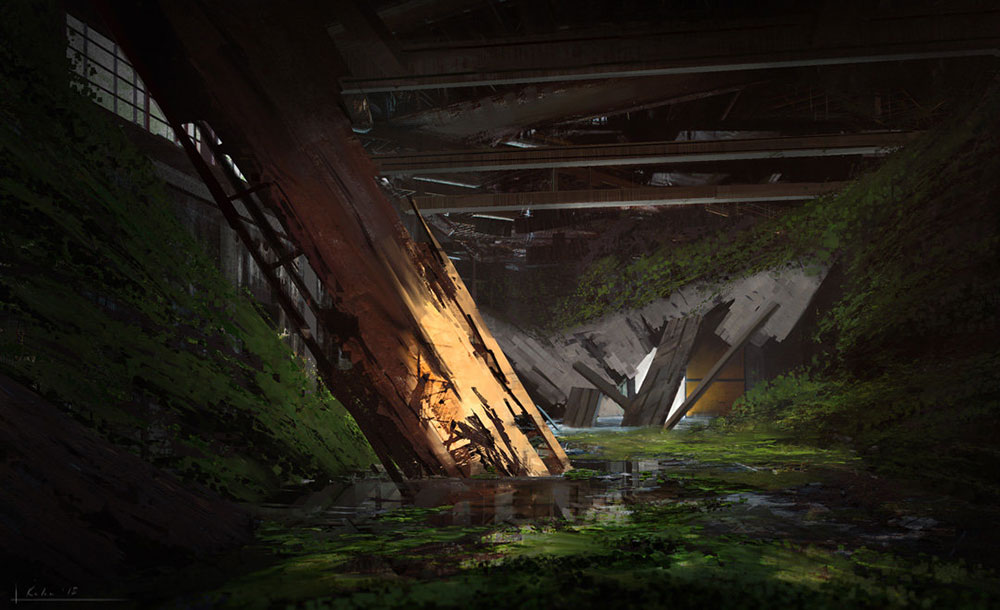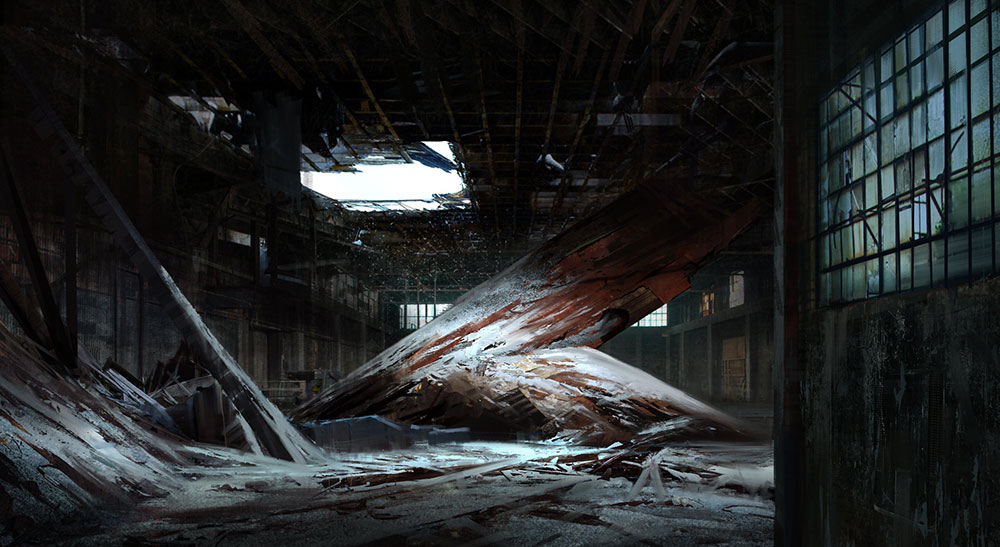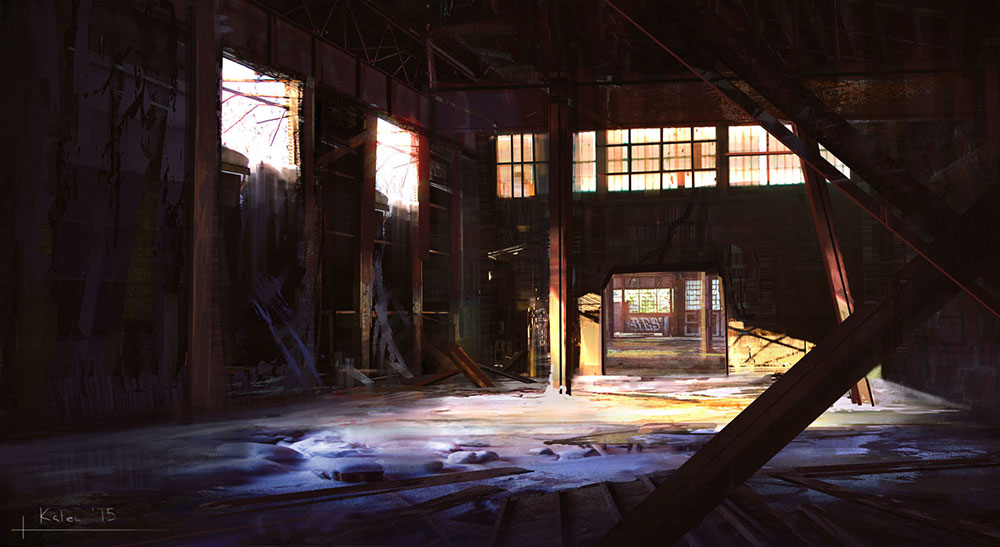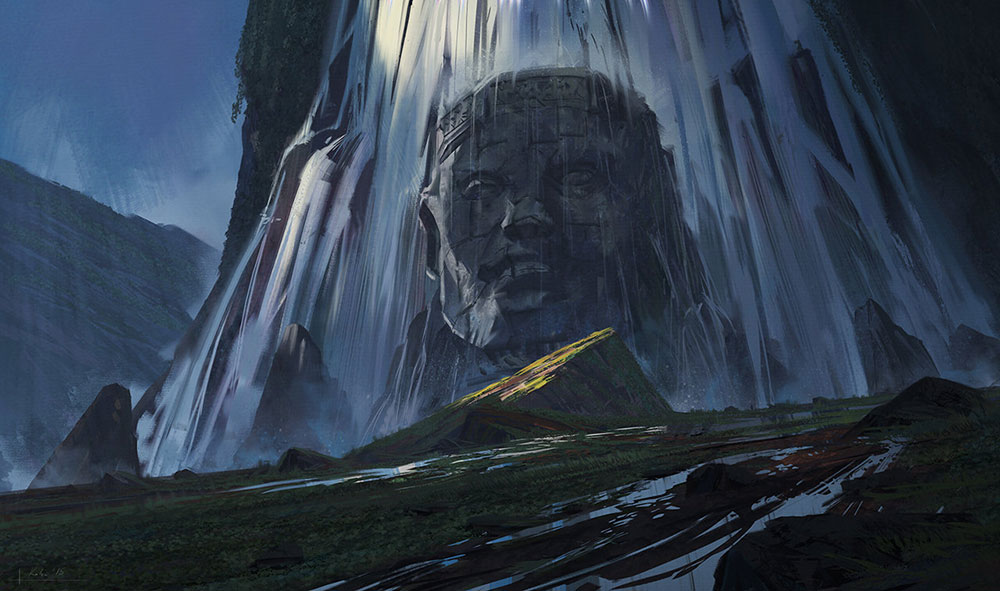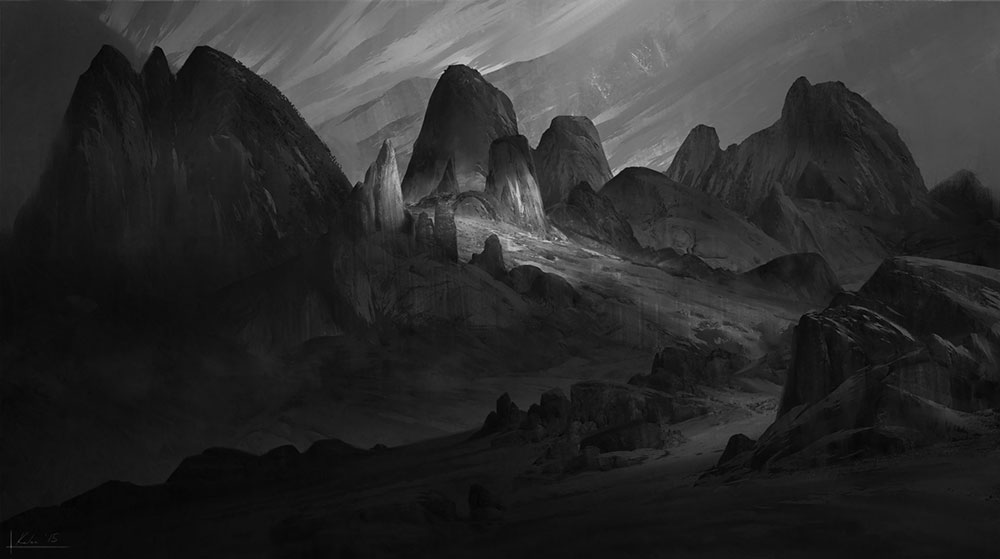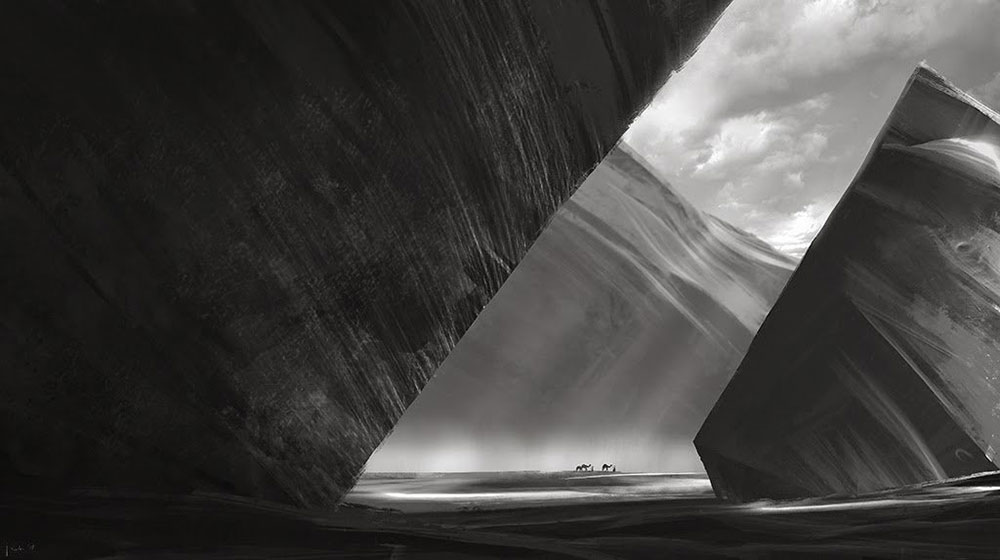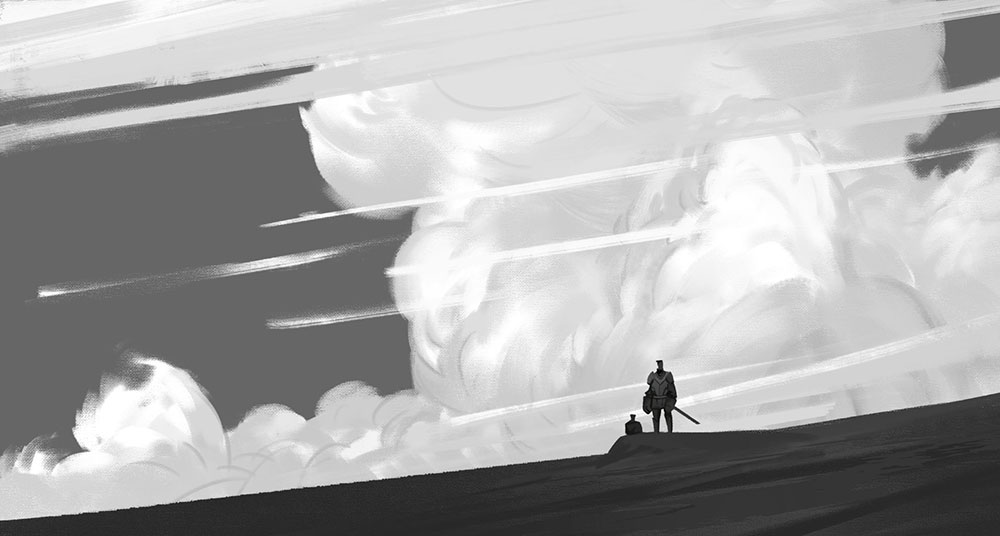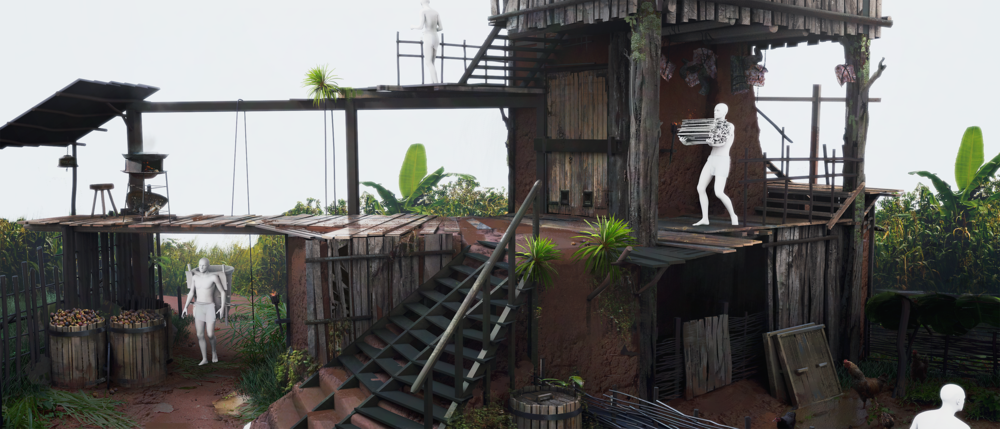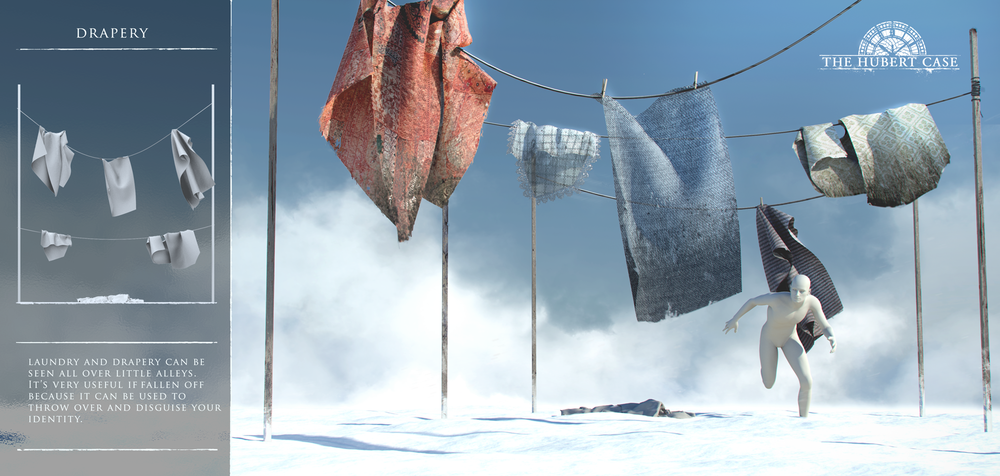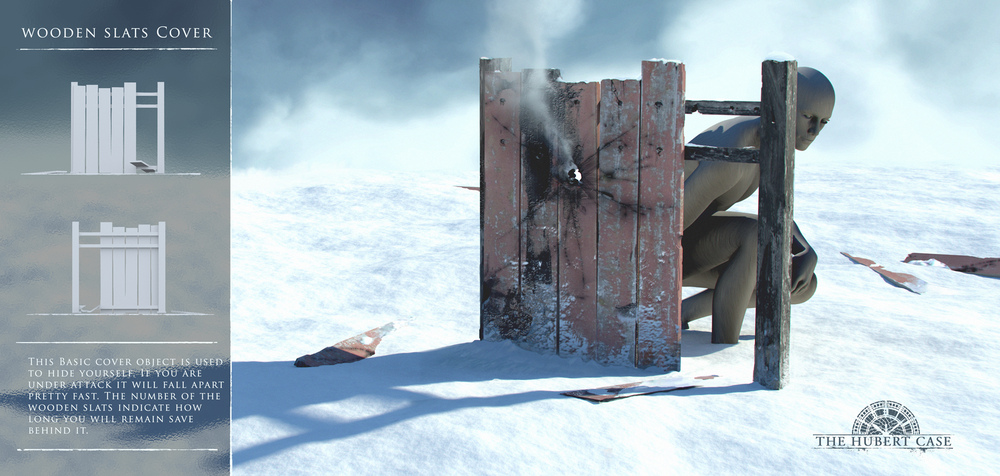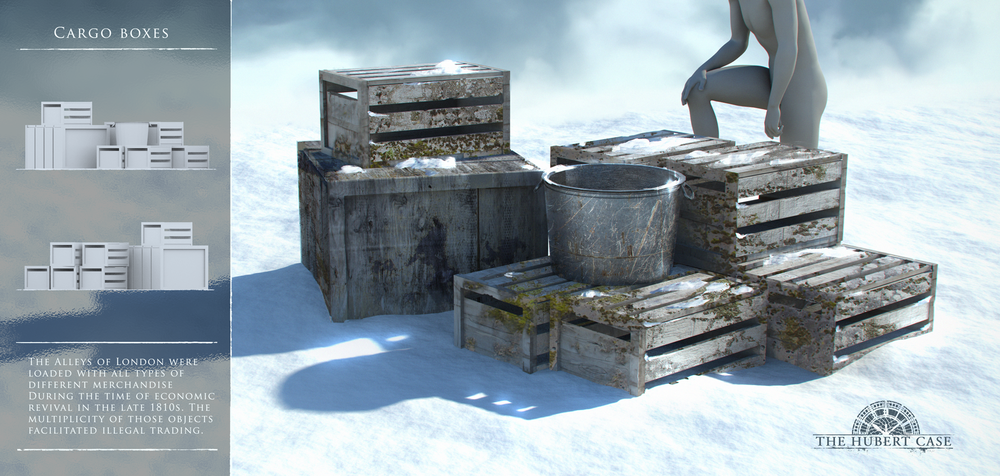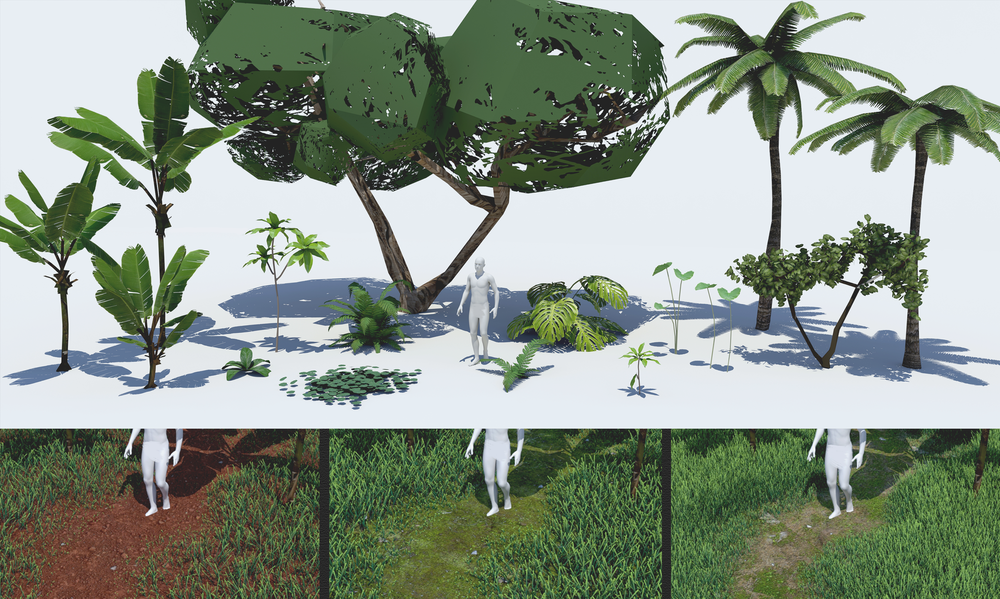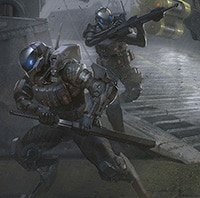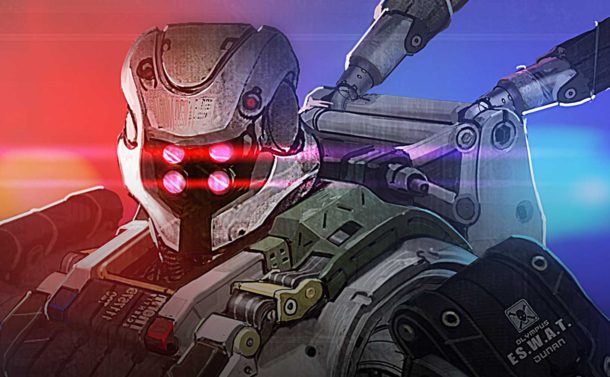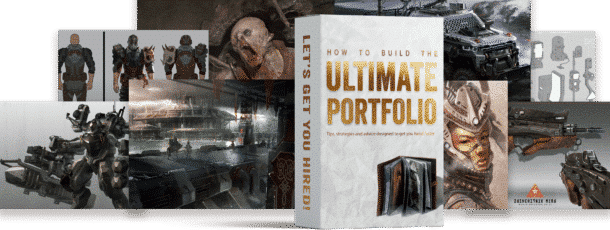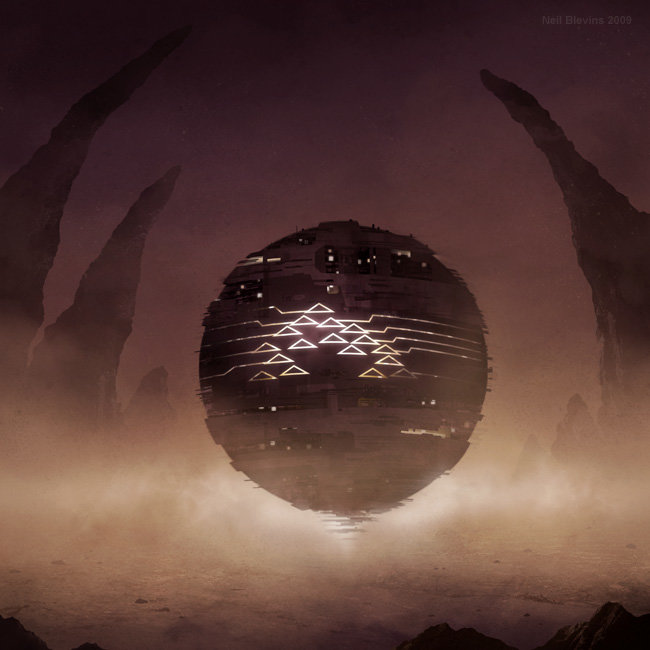
by Eliott Lilly | Mar 14, 2016 | Interviews
Neil Blevins is a veteran concept artist and illustrator with 17 years of experience working in the video game and entertainment industry.
Check out his Portfolio
Be on the lookout for Neil’s upcoming book: “The Story Of Inc” coming out this summer, http://thestoryofinc.blogspot.com/ http://www.facebook.com/thestoryofinc
Neils Blevins’s current portfolio examples:
In this first part of the interview, we asked Neil Blevins specific questions about what it’s like to be a concept artist in the entertainment industry, discuss some of the one-the-job challenges, as well as his educational background. Here’s what he had to say:
HOW OLD WERE YOU WHEN YOU DECIDED TO COMMIT TO BEING AN ARTIST? WHAT WERE YOUR MOTIVATIONS/ INSPIRATIONS?
When I was 4 years old, I grabbed a screwdriver, hammer, and piece of scarp wood, and on my own carved a detailed ATAT from The Empire Strikes Back, including all the pipes on the side etc. I think after that incident, it was sort of inevitable I’d become an artist. However, it was a tough sell to the family since art isn’t exactly known as a stable or lucrative career. Thankfully, my art interests were a little more commercial in nature (film, videogames, etc), so I didn’t do the starving artist painting portraits type of thing, I wanted to make spaceship and aliens. I guess I got serious when I switched from Computer science to fine arts in college. Thankfully, not long after I got my first art related job offer, so my switch worked out.
WHAT ARE THE BIGGEST CHALLENGES ABOUT YOUR JOB AS A CONCEPT ARTIST?
In general, the biggest challenge for me (and probably many artists) is figuring out the mind of the client, figuring out what they want to see, and then provide them that.
One misconception I see a lot is that you get to draw/paint/create whatever you want in this industry. This is a job, and your role is to make the artwork that the clients want to see. Your goal is to produce someone else’s vision.
Even the greatest artists or directors have to answer to whomever is paying for the project. Sure, you get to inject as much of your own vision as you’re able, but your first goal is to make the client happy. Which is one reason I really recommend finding some way to do your own personal artwork on the side, so you have at least a little area where you are your own client, and you can focus on something that’s 100% yours.
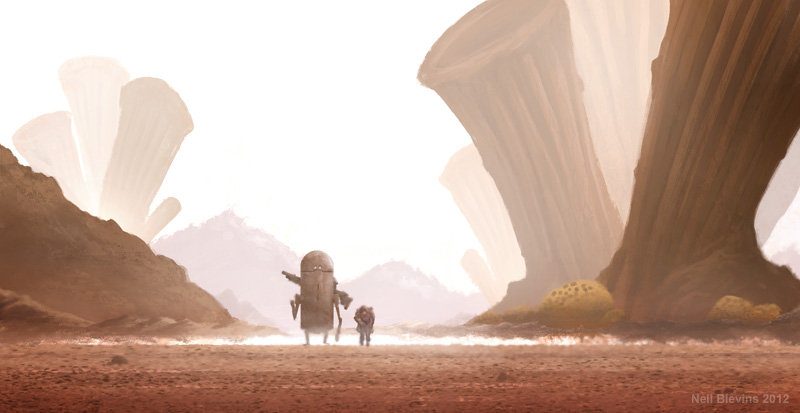
CAN YOU SHARE A PERSONAL STORY, ABOUT A HARD LESSON THAT YOU LEARNED, THAT COULD HAVE BEEN AVOIDED, HAD YOU BEEN BETTER INFORMED?
Health is probably one of the biggest. As you get older, stuff like stress, late nights, being worried about the project you’re on, this all takes a toll on you. And that can lead to very serious health problems. Like life and death issues. No project, no role, nothing the entertainment industry can provide is worth crippling yourself over. So work hard, but remember that you are not a machine, and take care of yourself. I have found Yoga and meditation for example to be excellent ways of reducing stress and doing something away from the computer.
DID YOU STUDY OR TAKE ADDITIONAL CLASSES, OUTSIDE OF SCHOOL? IF SO, HOW FREQUENTLY? ARE THERE ANY CLASSES YOU TOOK WHICH SURPRISINGLY HELPED YOU IN THE LONG RUN MORE THAN YOU THOUGHT THEY WOULD?
I found it important to try out a lot of different sorts of art. I did etching, I did screen printing, I did sculpture, art history.
Don’t just limit yourself to one technique or subject when you’re learning, try anything and everything that involves producing an image, all of those ideas and styles can help you find your own unique voice.
As for surprising classes, I did find a little computer science to be helpful, it helps me talk to people developing the tools that I use to make my art more effectively.
IN THIS DAY AND AGE OF INEXPENSIVE AND EASILY ACCESSIBLE ONLINE TRAINING MATERIALS, HOW VALUABLE IS GETTING AN EDUCATION FROM A UNIVERSITY OR COLLEGE?
A formal education still has several advantages. One many people don’t think about is work visas. If you are not working in your own country (which is often), you will need a work visa, and despite what you may think, not every company will be able to easily get you one. If you have a degree in your field, a lot of work visas become easier to get. I have seen before companies not hire someone because their work visa situation is too complicated. Help reduce that complication as much as possible. Another big advantage of a school is that you are in a class with other people who want to do the same thing you want to do. You will learn a lot from these people, possibly more than you’ll learn from even the teacher. They will teach you, inspire you and push you in an immersive way that online teaching really can’t. And these other students will be excellent contacts who may help you land a job later on. So while you can be self taught at home, a school can still be very helpful.
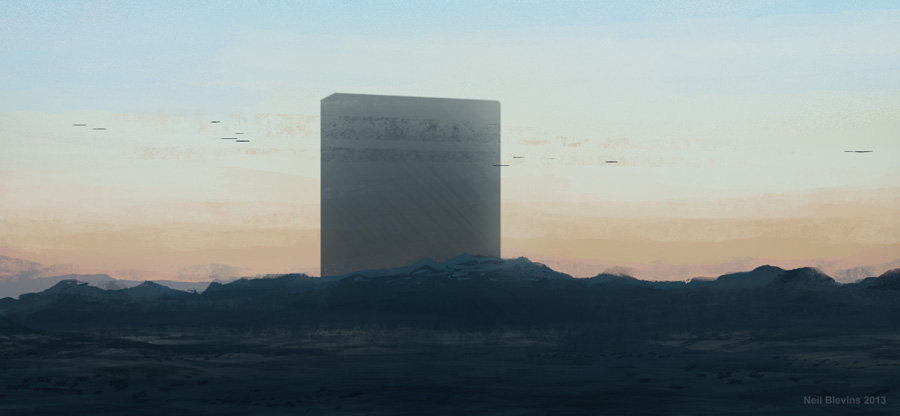
DID YOU HAVE ANY OUTSIDE HELP PUSHING YOU ALONG WITH YOUR TRAINING? FROM A MENTOR, PASSIONATE TEACHER? FAMILY? FELLOW STUDENT?
I am in general a very self motivated person, no one pushed me towards art, it was something that I’m just super obsessed about. But I certainly had help along the way.
For example, I attended a semi-private art class since age 6, the teacher, Canadian wildlife painter Renate Heidersdorf, was integral in teaching me a lot about art. And once I got into the industry I have learned so much from the people I have worked with.
This concludes Part 1 of our interview with Neil Blevins. In Part two, we discuss with Neil his Dos and DONTs of portfolio building, how he branded and marketed himself in the beginning, and much more. All images used with permission by the artist. ©Neil Blevins

by Eliott Lilly | Mar 14, 2016 | Interviews
Neil Blevins is a veteran concept artist and illustrator with 17 years of experience working in the video game and entertainment industry.
Check out his Portfolio
Be on the lookout for Neil’s upcoming book: “The Story Of Inc” coming out this summer, http://thestoryofinc.blogspot.com/ http://www.facebook.com/thestoryofinc
Neils Blevins’s current portfolio examples:
If you haven’t already, be sure to check out Part One of this interview, where we asked him specific questions about what it’s like to be a concept artist in the entertainment industry, discussed some of the one-the-job challenges, as well as his educational background. Here, in Part Two of this interview, we ask Neil Blevins specific questions about building his portfolio, marketing himself in the industry and more. Here’s what Neil Blevins had to say:
HOW DID YOU STRUCTURE THE PORTFOLIO THAT LANDED YOU YOUR FIRST GIG? CAN YOU DESCRIBE THE TYPE OF WORK YOU HAD IN IT? WHAT STUDIO/ CLIENT WERE YOU APPROACHING-
So I started just as the internet was becoming a thing— In fact, it was CompuServe, and I participated on a number of forums there showing my artwork, not to get a job specifically (I was still in school), but more as a way to participate in the community, and get feedback as I tried out new digital tools. I would post still images, usually sci-fi, some robot or landscape, using 3D software and then hand painted in Photoshop over top. Then one day, Tim Miller from the company Blur in Venice CA, approached me online and said to keep them in mind once I finished school, they may be interested in hiring me. So in fact, my first job didn’t come from any sort of full portfolio, it just came from me participating in an online community.
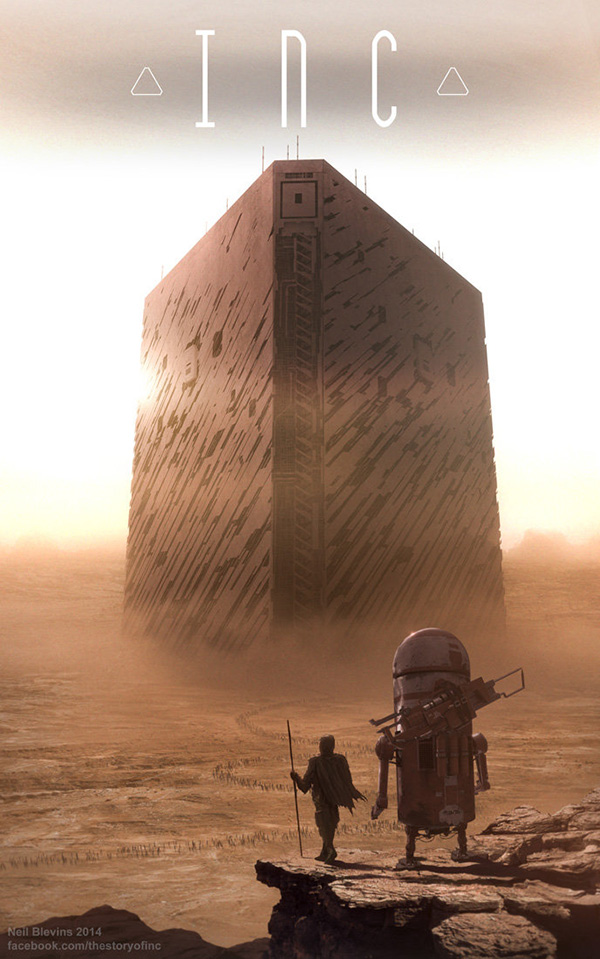
IF YOU WERE JUST STARTING OUT TODAY, AS AN INTERMEDIATE DIGITAL ARTIST, WHAT TACTICS WOULD YOU EMPLOY TO LAND A GIG INTO THIS INDUSTRY?
There are many many ways to get your artwork seen by the world at large. I’d certainly start with an online portfolio, say at Art Station or the like. I’d heavily participate in online communities, so people get to know you and your skills. While I haven’t done this much, if starting out, I’d also participate in real life events, where professional artists do workshops and such. Not only is it a great learning opportunity, but also a great place to network, and show people your work in real life.
WHAT QUALITIES DO YOU ASPIRE TO THAT DISTINGUISHES YOUR ARTWORK FROM OTHER ARTISTS? WHAT LED YOU TO DEVELOP THOSE QUALITIES? . WHAT ADVICE DO YOU HAVE FOR ARTIST WHO WANT TO OBTAIN A “STYLE” TO THEIR LOOK.
I didn’t plan on having a style, but I’ve made enough images it just kinda happened. My style usually includes a single figure or main focus, dramatic lighting, for the most part a single color palette, and a misty environment. I love making robots, when I make them, I try and focus on a single bold shape, with then tons of tiny details.
My style just came from me making image after image after image that interested me, and eventually a naturally gravitated towards a certain look.
But I am always trying to push that look as well in subtle ways. Most recently, I am trying to introduce more dramatic camera angles and a little more color complexity than a single color theme. In general, I don’t suggest trying to make a style, they usually grow organically from repetition, but if you do want to work at it, take some of your favorite artists, break down what elements you enjoy the most in their work, and then try and incorporate those things into your own work.
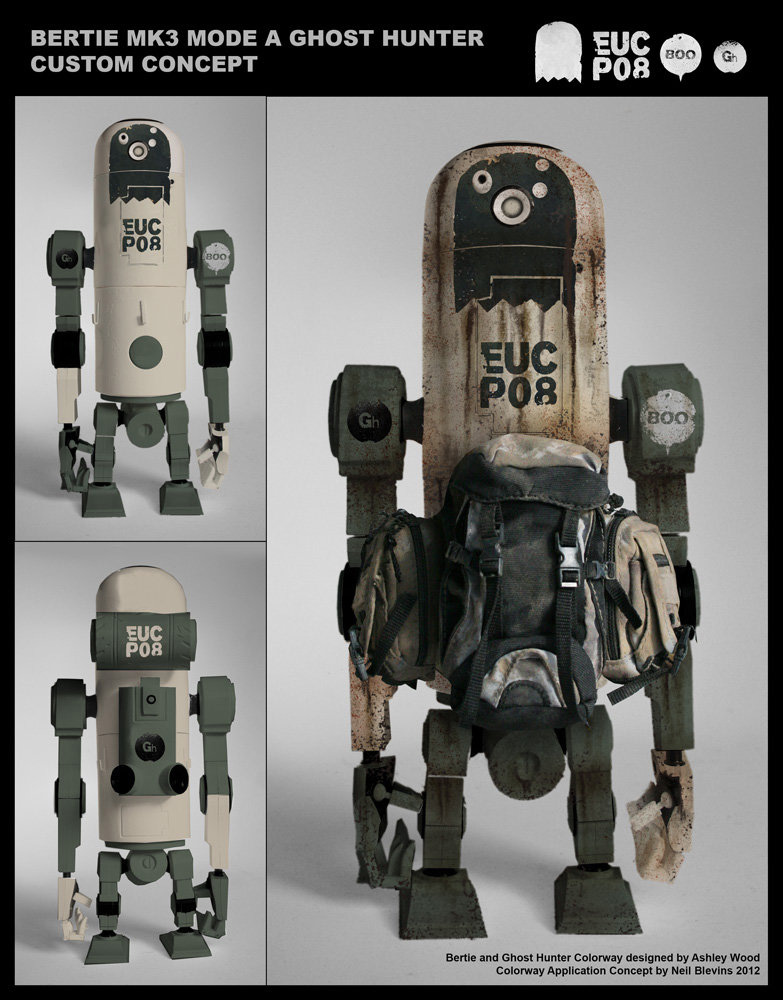
This concludes our interview with Neil Blevins. If you would like to read more, be sure to check out his Words Of Wisdom. All images used with permission @Neil Blevins.
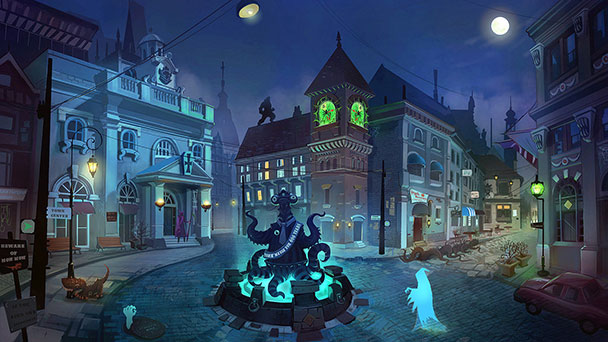
by Eliott Lilly | Feb 29, 2016 | Interviews
Kate Yu is a concept artist and illustrator working in the video game and entertainment industry.
Professional Portfolio and Blog
Educational background:
Attended The Guildhall at SMU, Majored in Art Creation, graduated 2007. Holds a degree in Video Game Development in Art Creation
Number of years in industry: 9
Projects worked on:Brothers in Arms, Borderlands, Fear 3, Wizard 101, Wizard of Oz slots
Kate Yu’s current portfolio examples:
In this interview, we asked Kate Yu specific questions about what it’s like to be a concept artist in the entertainment industry, discuss some of the one-the-job challenges, as well as her educational background. We also discuss with Kate her Dos and DONTs of portfolio building, how she branded and marketed herself in the beginning, and much more.Here’s what she had to say:
HOW OLD WERE YOU WHEN YOU DECIDED TO COMMIT TO BEING AN ARTIST? WHAT WERE YOUR MOTIVATIONS/ INSPIRATIONS?
I think I was 20 years old when I decided to be an artist for the video games industry. Graphic fidelity was constantly improving each year and my favorite games at that time, (like Never Winter Nights, Diablo, Syberia) really started to look amazing. My love of these games, became the motivation behind researching more about their development process, and boom!, I was sold on becoming a concept artist.
WHAT DO YOU LIKE MOST ABOUT YOUR JOB? WHAT DO YOU FEEL ARE THE BIGGEST CHALLENGES?
I think my biggest realization is that the game industry is an industry of business.
As a “green” artist fresh out of school, I was excited for the small dev team feel, the passion in the projects, and the ownership of my creation, but, once I got into the industry I realized that in reality, this is not always the case. At the end of the day,each studio will have it’s own culture that you will have to deal with because each project needs to secure financial backing. I’ve learned a lot about the business and what it means for the creatives, but, if I had to choose again, I still wouldn’t want to be in any other industry.
CAN YOU SHARE A PERSONAL STORY, ABOUT A HARD LESSON THAT YOU LEARNED, THAT COULD HAVE BEEN AVOIDED, HAD YOU BEEN BETTER INFORMED?
I was working passionately hard for this company and it’s game- frequently keeping late hours doing anything and everything that was needed. After doing this for three years I became really worn out, and despite my efforts,the project looked like it was going no where. So I decided to leave the studio. This decision upset the company heads and when the game did finally ship, years later, they denied me full credits for my efforts on the project.
Be really sharp about the company culture you are working for, and always think objectively before you make any sudden moves. This is still a business and being an artist in my opinion needs to learn how to tactfully watch out for his/her interests.
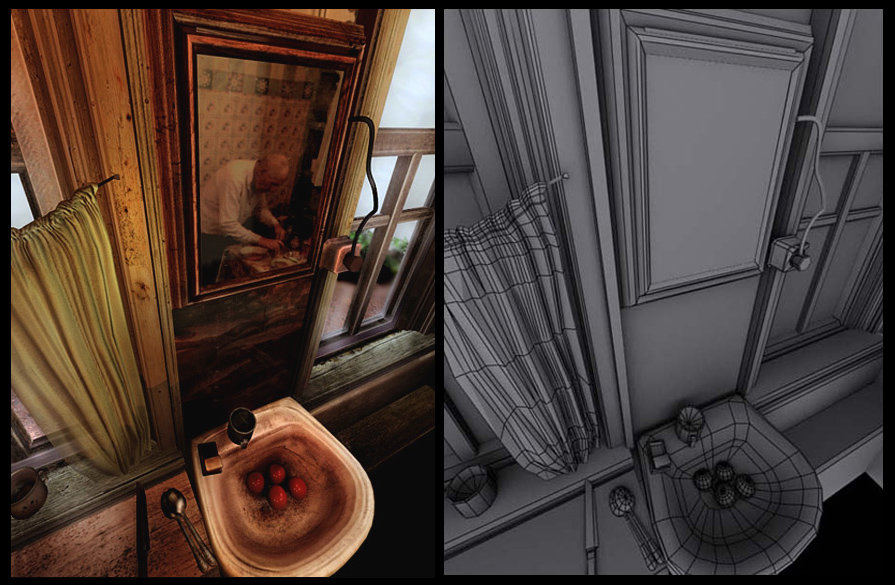
An example of Kate’s Student work
IN THIS DAY AND AGE OF INEXPENSIVE AND EASILY ACCESSIBLE ONLINE TRAINING MATERIALS HOW VALUABLE DO YOU BELIEVE, GETTING AN EDUCATION FROM A UNIVERSITY OR COLLEGE WILL BE FOR ASPIRING ARTISTS WHO WANT TO BREAK INTO THE ENTERTAINMENT INDUSTRY?
I will always support educational institutions, because they facilitate great spaces for student- teacher interactions as well as student- student interactions. These institutions can also provide facilities that you won’t otherwise have access to. That said, I also recognize that institutions are getting more expensive, and the specialty trade schools often come with jaw dropping price tags.
The good news is that in the game industry, most studios don’t require you, the artist, to have a diploma, so if you are able to find great materials online and you are a talented hard worker, then you will go far.
The bad news is that for a new artist, the internet resources can be daunting to sift through, you maybe getting some terrible advice and you won’t even know it. I suggest that if you choose to go to a school, then heavily research the credibility of the school, and most importantly, know what kind of a student you are- then go find the best place that fits your personality and your financial capability.
DID YOU HAVE ANY OUTSIDE HELP PUSHING YOU ALONG WITH YOUR TRAINING?
I’ve had a lot of help from fellow artists, and I’ve learned a lot by sharing techniques and seeing how other artists tackle their problems. I’ve worked with a few senior concept artists in the industry who provided me with their mentorship, and I think this is the most important thing to have as an artist.
Artists should choose good mentors no matter what schools they go to or studios they work for. In return, I believe artists should try to provide good mentorship to other artists and keep the good vibes going.
ARE THERE ANY CLASSES YOU TOOK IN SCHOOL WHICH SURPRISINGLY HELPED YOU IN THE LONG RUN MORE THAN YOU THOUGHT THEY WOULD?
I remember how much the sculpture class helped me see shapes 3 dimensionally and improved my feel for perspective.
HOW DID YOU STRUCTURE THE PORTFOLIO THAT LANDED YOU YOUR FIRST GIG?
I always try to have work in my portfolio that in some way caters to the studio I’m applying for. For my first gig, with GearBox software, working under people like Randy Pitchford, I had some mechanical designs, general environment concepts, and a lot of environment 3D models because they were making Brothers in Arms at the time.
HOW DID YOU HUNT DOWN YOUR FIRST JOBS IN THE INDUSTRY?
My school helped me land my first gig. We had student show cases and career days where we were able to speak to the recruiters from various companies. My advice for artists who do not have these events is to promote their work on online art galleries and to check out Indeed.com, which in my opinion, hosts the most current, up to date and complete available job listings for game developers.
HOW DO YOU CURRENTLY PROMOTE YOUR ARTWORK?
I’m not a very prolific self promoter- I only have a website that I update as needed. However, a lot of my artist colleagues promote themselves by entering into contests, or print out their work and show them at major industry conferences. I even have a group of friends who branched out into creative books such as art books, comics, or children’s book illustrations. Another channel is to get involved in freelance projects on the side. I think these are all really good self-promoting channels artists can consider.
This concludes our interview with Kate Yu. If you would like to read more from Kate, be sure to check out her Words Of Wisdom, later on this week. All images used with permission by the artist. ©Kate Yu.
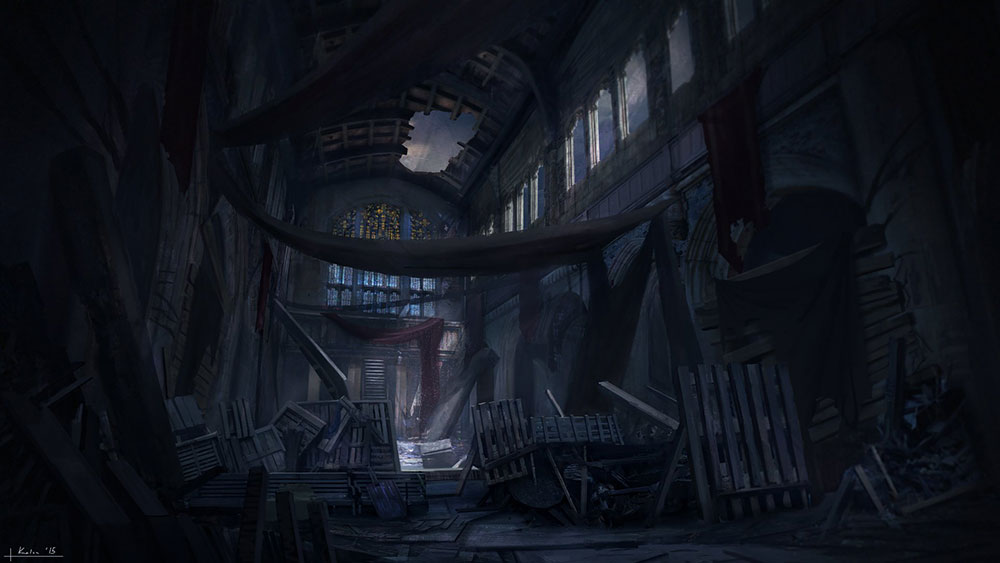
by Eliott Lilly | Feb 8, 2016 | Interviews
Kalen Chock is a concept artist and illustrator working in the video game and entertainment industry.
Professional Portfolio
Check http://www.robotpencil.net/ to learn about Kalen’s mentorship opportunities
Visit http://gumroad.com/k04sk for Kalen’s affordable art tutorials
Educational background:
Number of years in industry: 9
Projects worked on: Pirates Treasure Hunters , Dust , various Film Pitch Projects , various TV commercials .
Kalen Chock’s current portfolio examples:
In this first part of the interview, we asked Kalen Chock specific questions about what it’s like to be a concept artist in the entertainment industry, discuss some of the one-the-job challenges, as well as his educational background. Here’s what he had to say:
HOW OLD WERE YOU WHEN YOU DECIDED TO COMMIT TO BEING AN ARTIST? WHAT WERE YOUR MOTIVATIONS/ INSPIRATIONS?
I was kind of late to “Concept Art”- I didn’t know I wanted to pursue it until my last year of school. At my school we only had one class of digital painting (which was background design) and although I enjoyed the class, I was still exploring alternate skill sets (mainly modeling, animation, vfx, etc.). Ultimately, I realized that I liked painting on a tablet and concept art was something that I really enjoyed. It also helped, that I was pretty much surrounded by passionate artists all the time; Anthony Jones, Edgar Cardona, Nino Aguilar, and Mio Rosario, to name a few. They were the best in the school.
WHAT ARE THE BIGGEST CHALLENGES ABOUT YOUR JOB?
I think the biggest challenges are usually non art related. I always say: “Art is easy- life is hard”. (Which I still think is true).
I was young when I had my first art job (about 22, I think), and it was a challenge learning how to be a professional, networking, and adjusting to studio life. Everything from taking art direction, making mistakes and then getting scolded by the boss, to dealing with office politics, and even things like paying back student loans, taxes, balancing my personal time, were all life lessons I had to learn over the years.
It wasn’t easy, but I guess that’s just the pressure that comes with being an adult. The only solace that I can find is that I’m not the only person who is going through this. In fact, some people closer to home have also experienced a similar sort of thing than me. Most of the time it comes down to student loans, and some of my friends have had to get creative with how they pay it off. Most of them decided to look at this article from GoFundMe, (https://www.gofundme.com/c/blog/how-to-get-rid-of-debt) to see how crowdfunding can help them to get back on track with their finances. And it’s a brilliant idea if you ask me. Why didn’t I think of it? If it helps you to focus on other things, like art in my case, then why shouldn’t you try it?
I got through it eventually, but it wasn’t easy that’s for sure. Those lessons were tougher to adjust to, as opposed to learning color, perspective, texturing … etc.
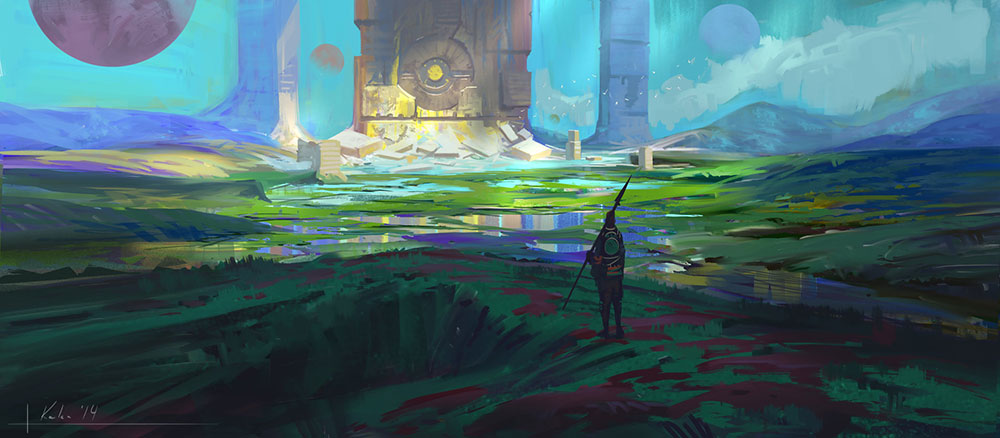
CAN YOU SHARE A PERSONAL STORY, ABOUT A HARD LESSON THAT YOU LEARNED (ON THE BUSINESS OR ARTISTIC SIDE OF THINGS), THAT COULD HAVE BEEN AVOIDED, HAD YOU BEEN BETTER INFORMED?
I have been rather lucky for the most part and haven’t had too many crazy hard lessons that I had to learn.
Only thing I can think of is save your work . You never know when a studio might lay you off and you will have nothing to show for it . If you can’t save your work then do a bunch of personal work on the side.
A few of Kalen Chock’s student examples:
-
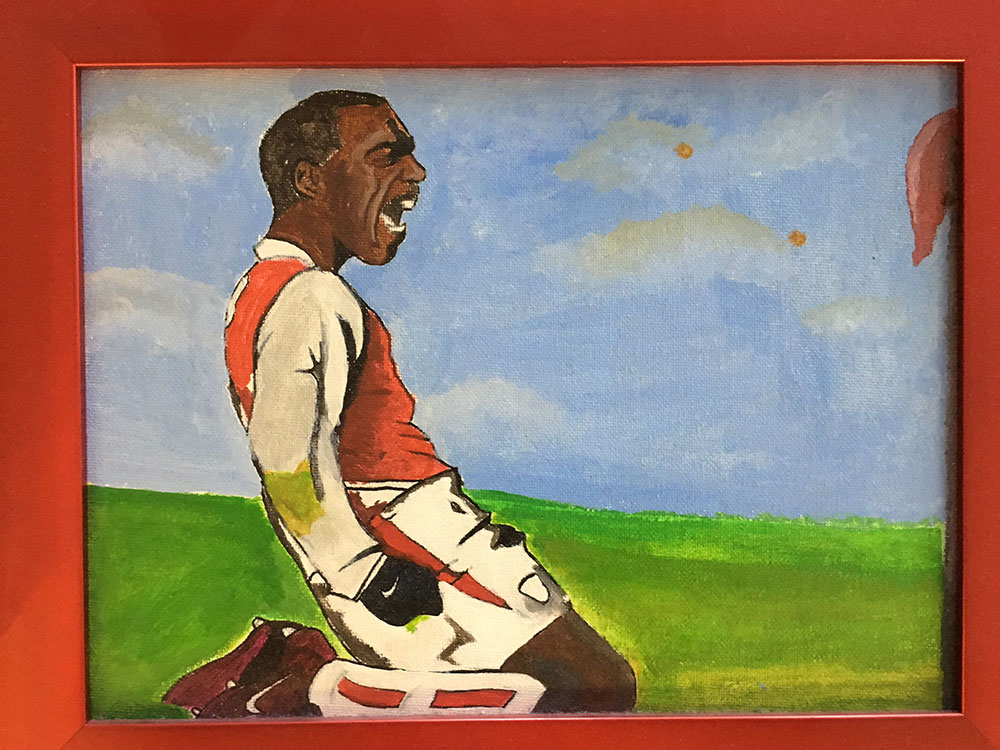
-
high school work
-

-
1st year of college
-
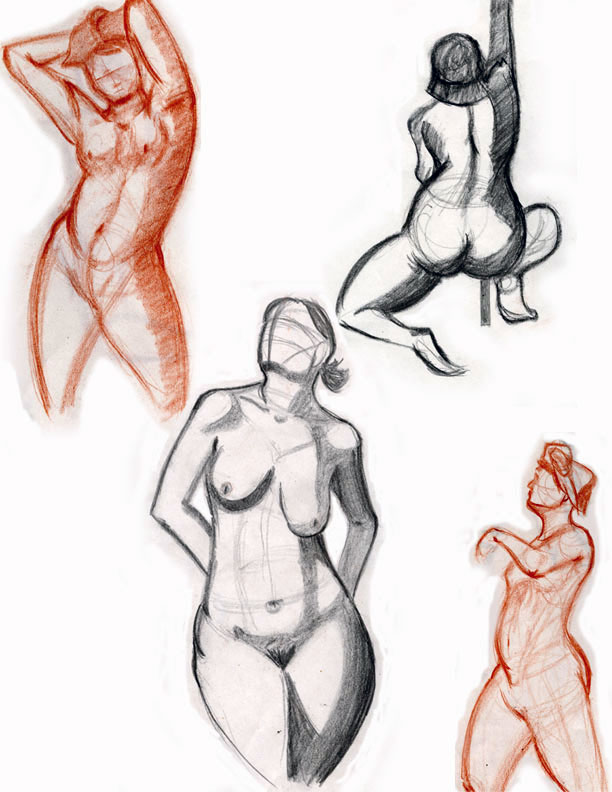
-
1st year of college
-
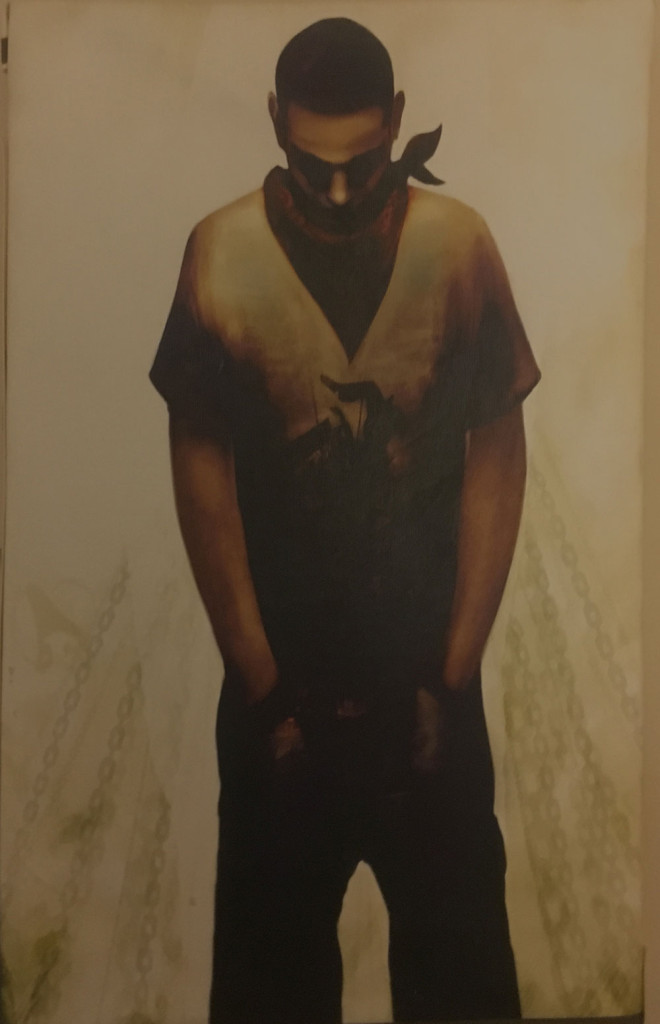
-
3rd year of college
DID YOU STUDY OR TAKE ADDITIONAL CLASSES/ LESSONS, OUTSIDE OF SCHOOL? IF SO, HOW FREQUENTLY? ARE THERE ANY CLASSES YOU TOOK WHICH SURPRISINGLY HELPED YOU IN THE LONG RUN MORE THAN YOU THOUGHT THEY WOULD?
I attended the Concept Design Academy while I was also enrolled at The Art Institute (during in my last year). I believe that we are students of art until the day we die, so I am always open to learning when I can. In fact, I currently go to life drawing at least once a week, try to practice traditional painting every other week, and I even take online classes to up my skills. It’s also important to do things that are non art related as well. To help clear my mind, I play lots of soccer and basketball when I can. Or I’ll run with my dog every morning, or do some martial arts when I can. Staying active mentally and physically is a good thing.
DID YOU HAVE ANY OUTSIDE HELP PUSHING YOU ALONG WITH YOUR TRAINING? FROM A MENTOR, PASSIONATE TEACHER? FAMILY? FELLOW STUDENT?
Yes; I have been lucky enough to be surrounded by amazing people and have had mentors, teachers, family and friends all impacting my life in a positive manner. No one gets to where they are without some help. Though it’s not necessary to have a mentor, they can be pretty helpful to have around; especially when it comes to seeking guidance for life problems.
My motto has always been: Prepare to walk this road alone if necessary, but take help if it is offered.
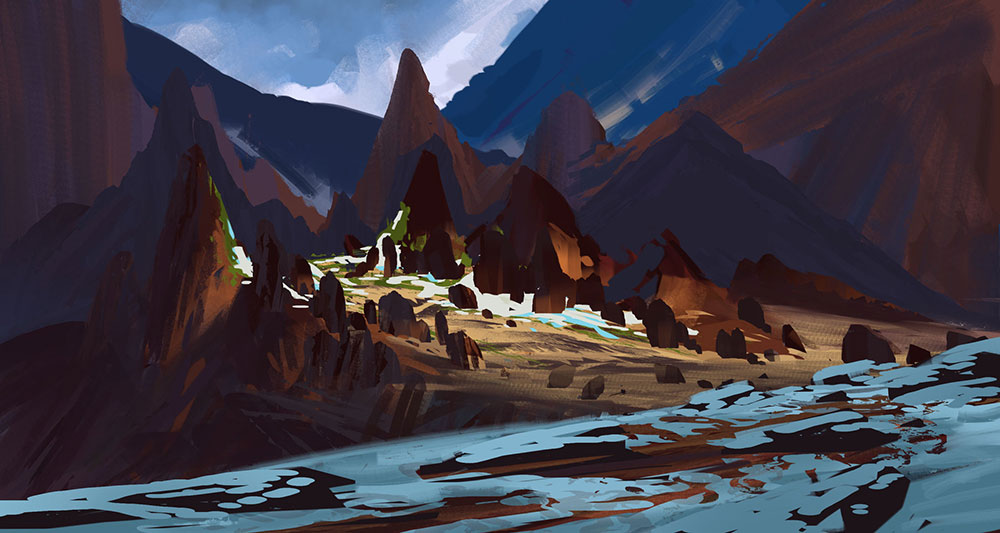
HOW VALUABLE WILL GETTING AN EDUCATION FROM A UNIVERSITY OR COLLEGE BE FOR ASPIRING ARTISTS WHO WANT TO BREAK INTO THE ENTERTAINMENT INDUSTRY? SHOULD THEY ATTEND A REGULAR SCHOOL WITH A LIBERAL ARTS PROGRAM? A 4 YEAR ART SCHOOL? OR JOB SPECIFIC TRADE SCHOOL (LIKE GNOMON, CONCEPT DESIGN ACADEMY, FZD, ETC). OTHER?
I get this questions a lot and to be honest it really depends on the type of person you are .
NOTHING is guaranteed in art. Therefore, going to art school will not guarantee you a job, just as being self taught will not guarantee you a job either.
To me it really just depends on on your personal circumstances and how you like to learn. We are fortunate to be in a time where one can take many different paths to get to the same destination . I think if you talk to a self taught artist who is successful vs a university art student who is successful. Chances are they will have very different backgrounds and upbringings which awesome, but one thing you will find similar across all paths of successful artists is that they worked super super super hard. Granted some paths are much cheaper than others but to me I don’t really think about the price -I simply think about if it will help me get to my destination and if it’s feasible.
This concludes Part 1 of our interview with Kalen Chock. In Part two, we discuss with Kalen his Dos and DONTs of portfolio building, how he branded and marketed himself in the beginning, and much more. All images used with permission by the artist. ©Kalen Chock
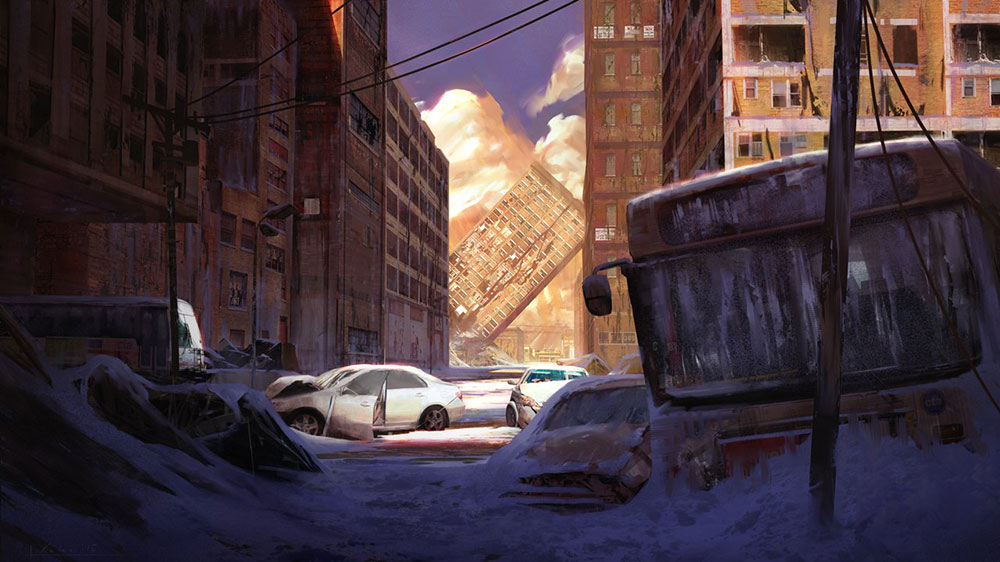
by Eliott Lilly | Feb 8, 2016 | Interviews
Kalen Chock is a concept artist and illustrator working in the video game and entertainment industry.
Professional Portfolio
Check http://www.robotpencil.net/ to learn about Kalen’s mentorship opportunities
Visit http://gumroad.com/k04sk for Kalen’s affordable art tutorials
Educational background:
Number of years in industry: 9
Projects worked on: Pirates Treasure Hunters , Dust , various Film Pitch Projects , various TV commercials .
Kalen Chock’s current portfolio examples:
If you haven’t already, be sure to check out Part one of this interview, where we asked him specific questions about what it’s like to be a concept artist in the entertainment industry, discuss some of the one-the-job challenges, as well as his educational background. Here, in part two of this interview, we ask Kalen Chock specific questions about building his portfolio, marketing himself in the industry and more. Here’s what Kalen Chock had to say:
HOW DID YOU STRUCTURE THE PORTFOLIO THAT LANDED YOU YOUR FIRST GIG? CAN YOU DESCRIBE THE TYPE OF WORK YOU HAD IN IT? WHAT STUDIO/ CLIENT WERE YOU APPROACHING- DID YOUR PORTFOLIO CATER TO THEM SPECIFICALLY? OR WAS IT MORE GENERAL?
To be honest my portfolio was terrible and had no structure; To this day I am not sure how I got hired . It was mostly just random environment paintings that I thought would be cool. I had only been doing it for about 8-9 months when I graduated so I was barely starting out. I did have a couple of characters and props, but for the most part it was all environments. Like a noob when I created a portfolio I didn’t know anything about tailoring my portfolio towards certain studios and clients. At that time I just focusing on creating paintings that didn’t suck.
HOW DID YOU HUNT DOWN YOUR FIRST JOBS IN THE INDUSTRY? FRIEND/ WORD OF MOUTH/ APPLIED ONLINE? IF YOU WERE JUST STARTING OUT TODAY, AS AN INTERMEDIATE DIGITAL ARTIST, WHAT TACTICS WOULD YOU EMPLOY TO LAND A GIG INTO THIS INDUSTRY?
Like most fairy tale stories of people who went to art school, when you graduate you have a portfolio show – which, if you’re lucky, a few employers will come and check out the fresh talent. I was lucky enough to meet a guy named Chad Lichty who was the producer of small startup game studio at the time. He saw my work at the show and a month later offered me a part time job (which eventually turned into full time work) He was the guy who gave me my first shot in the industry. To this day I owe that guy the world for believing in me enough to give me work even though in my mind I was not ready. Same thing goes for Brian McRae who was my art director at that time.
If you are an intermediate artist starting today, then my advice is just make good work, post where people can see it, and go to industry events to meet people. Usually those 3 things will land you work in some capacity. From there you just have build on it.
HOW DO YOU CURRENTLY PROMOTE YOUR ARTWORK? (WEBSITE ONLY? ON SOCIAL MEDIA? BOTH?) DO YOU HAVE ANY ADVICE FOR ASPIRING ARTISTS FIRST STARTING OUT, WHO NEED TO PROMOTE THEMSELVES.
I just create work, post it where people can see it, and be an active member in the artistic community. That last one is where I feel most people fall short. Most artist will post stuff and just wait for the applause and likes, but won’t “comment” and “like” other peoples work. I also see a lot of artists who get caught up in “status”, meaning they will only talk and be friends with an artist if they work at a big studio or can somehow help them elevate their own career. Most people can see right through it so being genuine is a big thing to me.
I think giving back is important, so make sure you’re active in the community; whether it’s connecting with artists, going to events, helping other artists, you should want to help create a better environment for the community of artists and in turn, yourself.
Don’t be afraid to let others in on your art journey, people love to see improvement. Its OK if you’re not amazing at the moment, no one is. If you constantly improve and post your work, then people will notice it and they will always look forward to your next “leveling up” moment.
WHAT QUALITIES DO YOU ASPIRE TO THAT DISTINGUISHES YOUR ARTWORK FROM OTHER ARTISTS? WHAT LED YOU TO DEVELOP THOSE QUALITIES? (FOR EXAMPLE: DO YOU PRIDE YOURSELF ON YOUR RENDERING ABILITIES? DESIGN SENSIBILITIES/ STYLE? BRUSH WORK? ETC). WHAT ADVICE DO YOU HAVE FOR ARTIST WHO WANT TO OBTAIN A “STYLE” TO THEIR LOOK.
Personally, I think “style” is something you develop when you’re much older and after you have lots of experience under your belt. You’re taste and mindset will change over time so I know if I do a style now, then I probably won’t like 6 months from now . Therefore, I am constantly exploring anything and everything. There isn’t much I really pride myself on at the moment, but I have been told on few occasions that people “love” my color choices, so I guess I can go with that one for now.
This concludes Part 2 of our interview with Kalen Chock. if you would like to read more, check out Kalen’s Words Of Wisom. All images used with permission by the artist. ©Kalen Chock

by Eliott Lilly | Sep 30, 2015 | Interviews
Sebastian Gromann is a freelance Concept Designer working in the entertainment industry currently living in Berlin, Germany.
Portfolio: www.sebastiangromann.com
Art Station: http://www.artstation.com/artist/SebastianGromann
Facebook: http://www.facebook.com/sebastian.gromann
Sebastian Gromann’s Current portfolio examples:
If you haven’t already, be sure to check out Part 1 of this interview, where we asked Sebastian Gromann specific questions about what it’s like to be a concept artist in the entertainment industry, dispel a few common misconceptions that aspiring artists tend to have about the field, and discuss his educational background. Here, in part two of this interview, we asked him specific questions about, building his portfolio, marketing himself in the industry and more. Here’s what Sebastian Gromann had to say:
HOW DID YOU STRUCTURE THE PORTFOLIO THAT LANDED YOU YOUR FIRST GIG? DID YOUR PORTFOLIO CATER TO THEM SPECIFICALLY? OR WAS IT MORE GENERAL?
In 2011 I was contacted by the amazing Tobias Mannewitz (whose concept work for the Game Of Thrones series you have surely seen already). He was browsing the artwork I posted on a German forum called digitalartforum.de and invited me to their Studio KARAKTER. At that time I was beginning my studies at a university in Berlin and hadn’t thought of applying anywhere since I felt that my works weren’t reliable enough. Speaking of which, at the time, I hadn’t set up a proper portfolio as I have now.
If time allows I always try to match my portfolio to the client’s needs. I also remind myself that my portfolio is only as good as the worst image displayed.
HOW DO YOU DISTINGUISH YOURSELF FROM OTHER ARTISTS? (RENDERING ABILITIES? DESIGN SENSIBILITIES/ STYLE? BRUSH WORK? ETC). WHAT ADVICE DO YOU HAVE FOR ARTIST WHO WANT TO OBTAIN A “STYLE” TO THEIR LOOK.
This is a tough one, Eliott. I read about the style question a lot and I think that artists, myself included, shouldn’t worry about obtaining a certain “style” too early. Style is something that develops over time, it´s kind of the essence of an artist reflecting his aesthetic beliefs and preferences. I wouldn’t recommend copying someone else’s style. Instead, figure out why you are so attracted to this particular way of painting and analyze the artistic influences.
You should concentrate on painting the stuff you like the way you like. Style will rise slowly but steady, no matter what.
Speaking of myself, I like to see “style“ as being a traveling case labeled with stickers. My preferences change quickly depending on the subject I’m currently into and with each studied topic I’ll add a sticker. Right now, for instance, I love to study cinematic framing and let that flow into my daily work. This way my stickers are constantly stacking and determining the look of my travel case – therefore my artistic style.
This concludes part 2 of our interview with Sebastian Gromann . If you haven’t already, be sure to head on over t o Sebastian Gromann’s Words of Wisdom to read more..
All images used with permission by the artist. ©Sebastian Gromann




